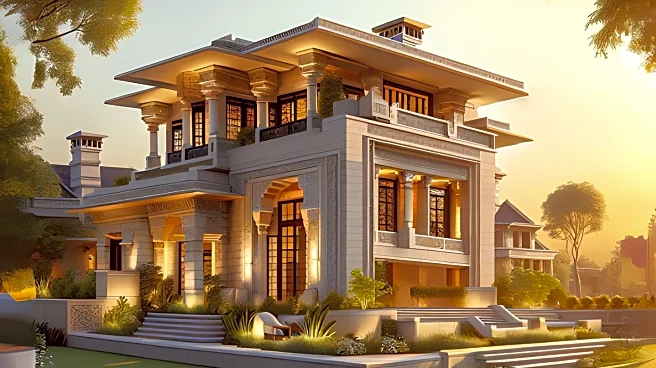What's Happening?
The Little Daisy Mansion in Jerome, Arizona, originally built in 1918 by copper baron James 'Rawhide Jimmy' Douglas, has undergone a significant restoration. The 25,000-square-foot estate has been transformed into a private venue that combines historical
charm with modern amenities. Under the management of Brian Grooms and his father, F. Andrew Grooms, the mansion now hosts events such as milestone birthdays, retreats, and weddings. The restoration aligns with current trends in travel and hospitality, emphasizing personalized experiences and connection to local culture. The estate offers exclusive private stays, ensuring privacy and tailored experiences for guests.
Why It's Important?
The revival of The Little Daisy Mansion reflects broader trends in the luxury travel market, where experiential and personalized travel is increasingly popular. This shift is supported by data from Airbnb and Expedia, indicating a rise in group bookings and 'together travel.' The estate's transformation into a venue for exclusive events and retreats highlights the growing demand for unique and intimate experiences. This trend could influence the hospitality industry, encouraging more properties to offer personalized and culturally immersive experiences. The Little Daisy's approach may set a precedent for other historic properties seeking to blend heritage with modern luxury.
What's Next?
The Little Daisy Mansion plans to offer custom wedding packages and will make its national TV debut in 2026. As the estate continues to host exclusive events, it may attract more attention from those seeking unique venues for celebrations. The focus on privacy and personalized experiences could lead to increased bookings and further development of similar properties. The estate's success may inspire other historic sites to adopt similar models, potentially influencing the luxury travel and hospitality sectors.
Beyond the Headlines
The restoration of The Little Daisy Mansion raises questions about the balance between preserving historical integrity and modernizing for contemporary use. The estate's transformation into a luxury venue highlights the potential for historic properties to serve as cultural and economic assets. This approach may encourage preservation efforts that prioritize adaptive reuse, ensuring that historic sites remain relevant and financially viable.
















